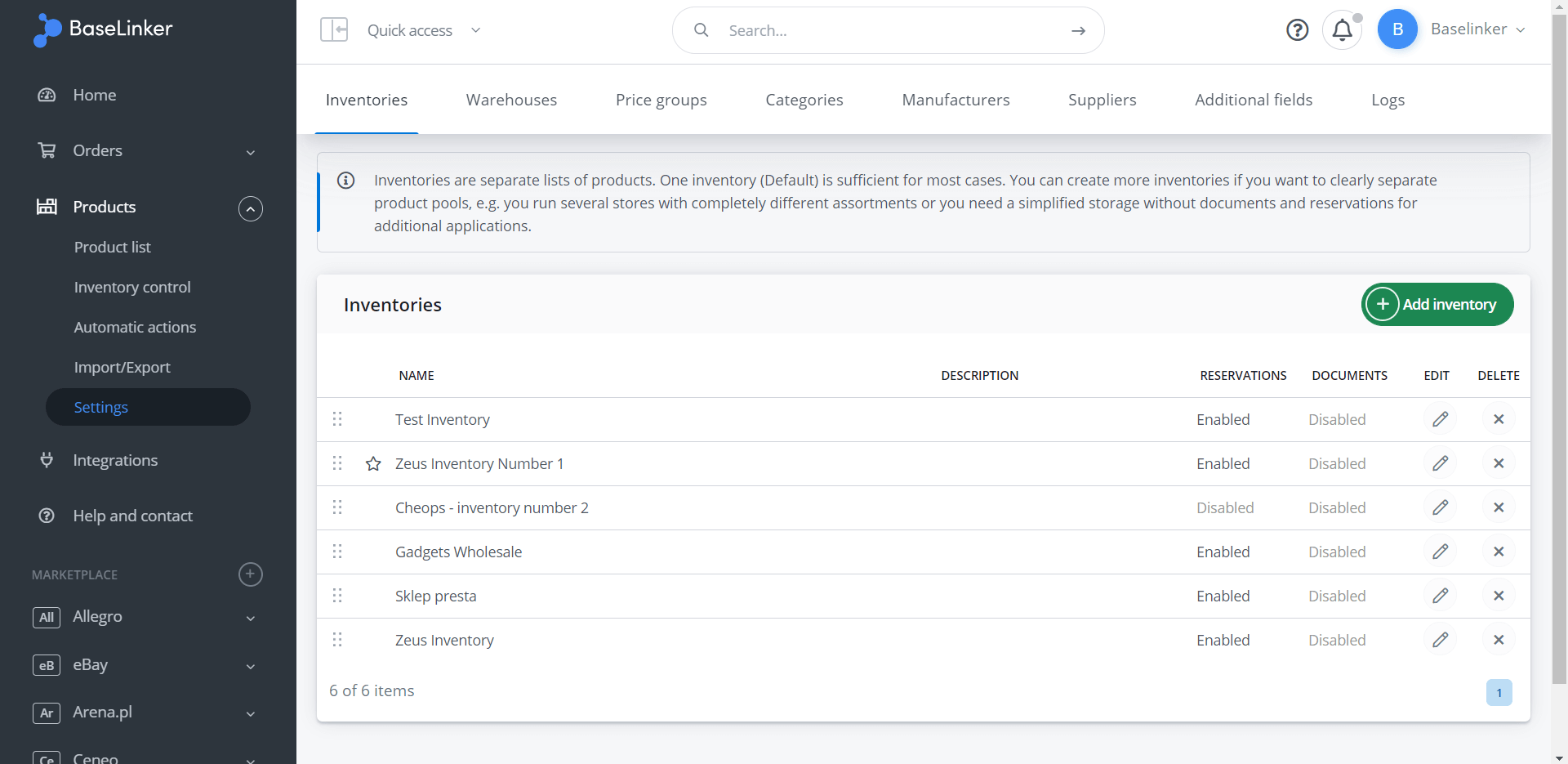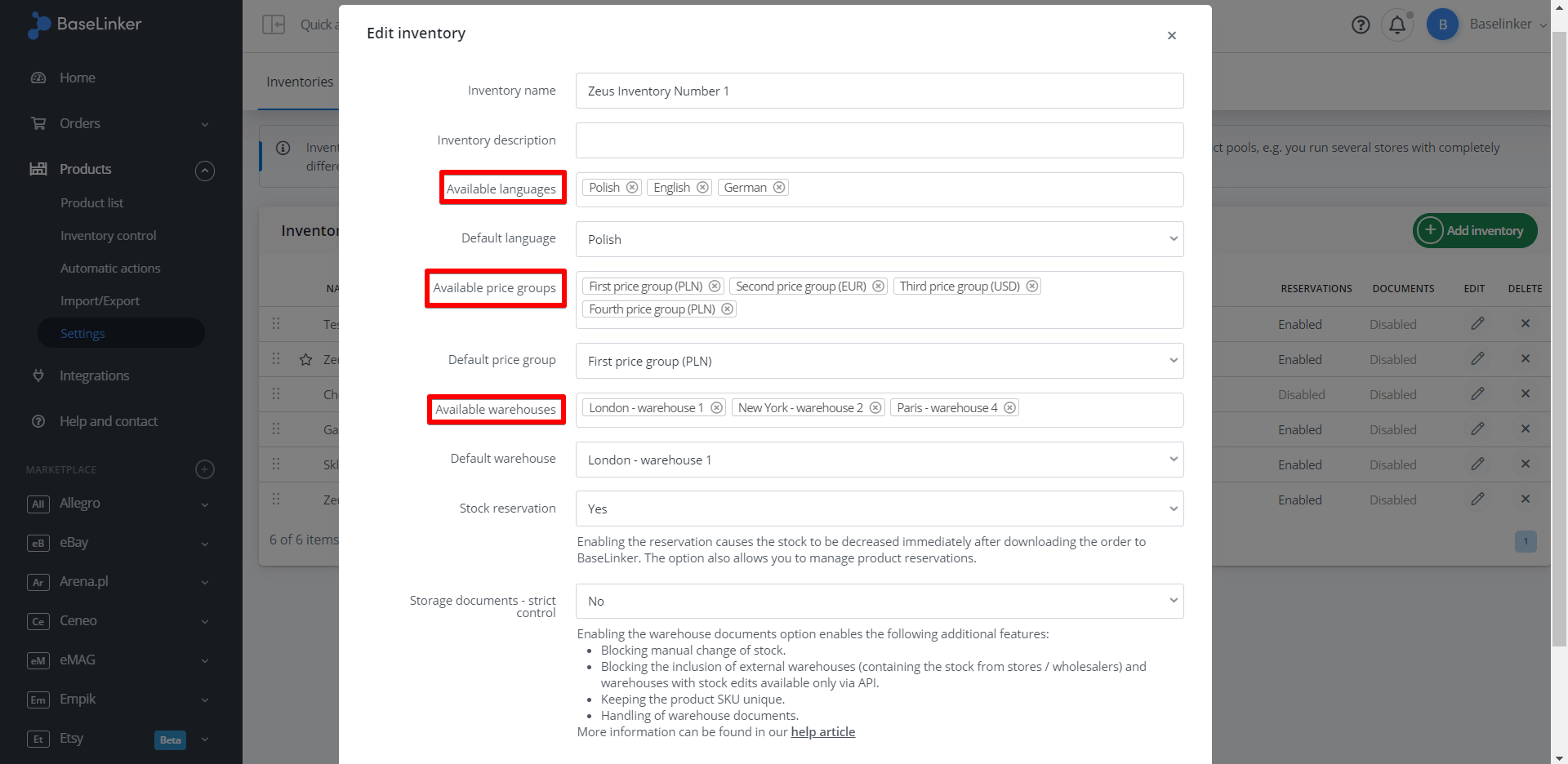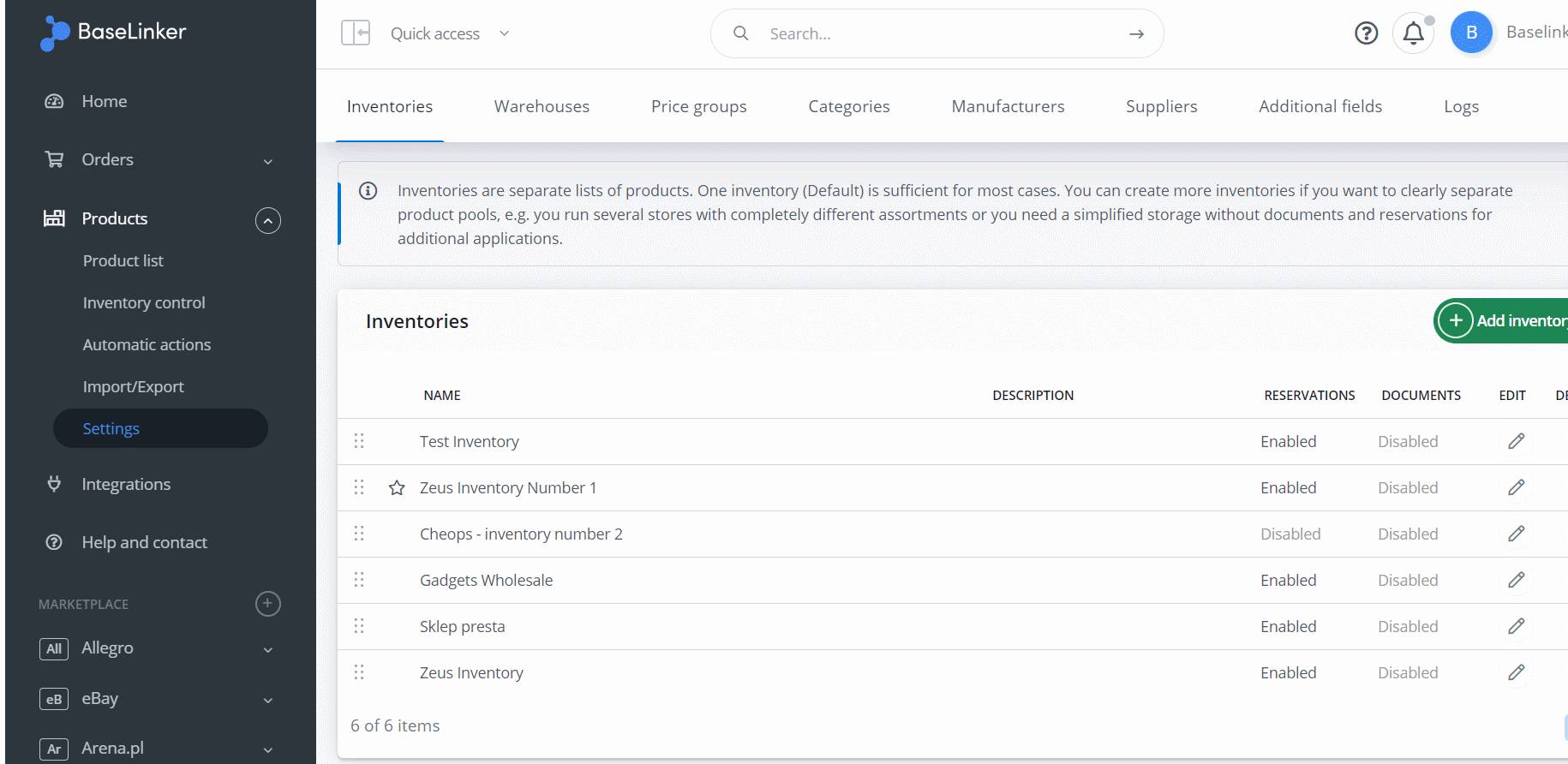All information about products is stored in the inventory. In other words – inventories are separate lists of products.
There is one inventory by default in the Products → Settings → Inventories tab. At this point, you can add another inventory or edit the settings of an existing one.
Inventory editing
Following information can be associated with an inventory:
- language – if several languages are assigned to the product, additional fields for entering description and parameters in other languages will appear. Default language is important when descriptive data in all selected languages are not completed. In case of omissions the default language is taken as the main one;
- price group – allows to enter different prices in different currencies for a product;
- warehouse (location and stock) – allows you to save the different stock and locations for a product.
At this point, the user can also decide:
- whether to enable stock reservation for a given catalog. If you enable reservations, products will be pulled from stock immediately after the order is fetched to BaseLinker (such order is not yet confirmed). This option also allows you to manage reservations;
- whether to allow negative stock levels – if you choose to block, it will not be possible to fulfill an order if it would lower the product’s stock below zero (including reservations);
- whether to enable the storage documents option for the inventory. Enabling the advanced inventory option enables the following additional features:
- blocking of manual stock changes (changes only based on orders and storage documents),
- tracking the uniqueness of product SKUs,
- storage document processing;
- whether to enable quick creation of new locations from the product card;
- select the priority of locations to which the warehouse worker should be directed during picking/packing.
ERP and WMS functions
If you enable warehouse control (Storage documents – strict control: Yes), additional options will appear for selection:
- Purchase cost calculations:
- AVCO (Average Cost) – default, average purchase price,
- FIFO (First In First Out) – purchase prices of products from the oldest deliveries will be used first,
- LIFO (Last In First Out) – the purchase price of the newest items will be applied first,
- FEFO (First Expired First Out) – the purchase price of items with the shortest expiry date will be used first,
- LEFO (Last Expired First Out) – the purchase price of items with the longest expiry date will be used first;
- Warehouse Management System (WMS):
- Basic – simple storage data (common product stock, multi-locations without exact location stock),
- Advanced – tracking each piece individually (stock at given location, batches, serial numbers).
The average purchase price is the default algorithm with the simplest operation and greatest readability. For advanced accounting, choose the method of selecting purchase prices on warehouse documents according to your needs.
When you choose the purchase cost accounting method FIFO, LIFO, FEFO or LEFO and/or advanced warehouse management system, you will see an additional option Additional parameters for item units.
Filtering by inventory
It is worth noting that if we created two inventories, an additional filter appeared in the product list. It allows you to switch between inventories.
One product can only be assigned to one inventory, and the inventories are independent of each other.



